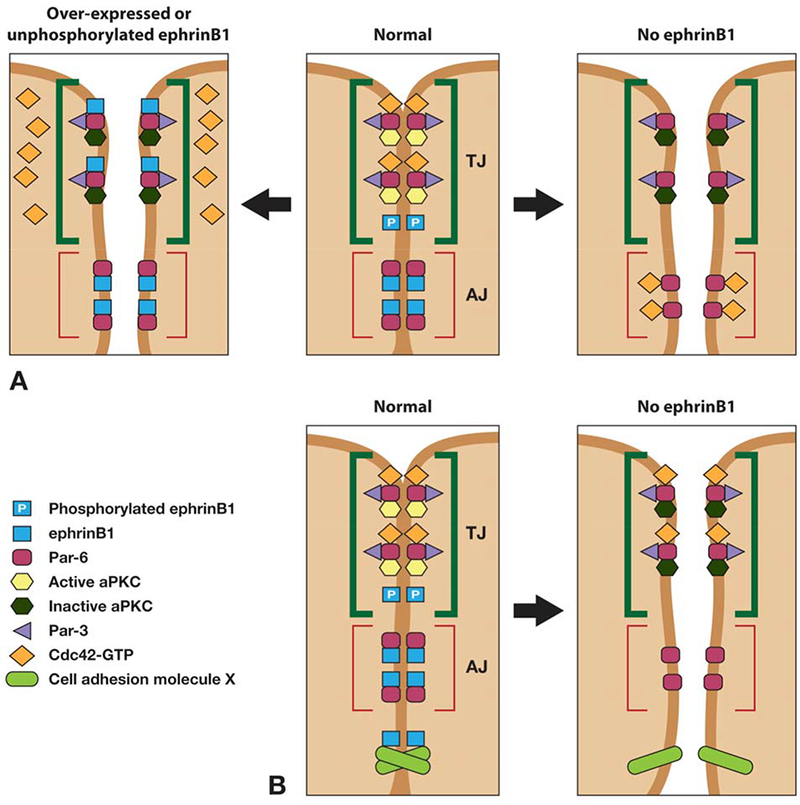Figure 7.

Model for ephrin-B1 regulation of tight junction formation. (A) Unphosphorylated ephrinB1 may compete with Cdc42-GTP for Par-6 binding and inhibit aPKC activation in the Par complex, leading to tight junction disruption. Upon phosphorylation of ephrinB1, an interaction with Par-6 is lost, and Par-6 is now available to interact with Cdc42-GTP and establish tight junctions. Loss of ephrinB1 may allow Par-6 that is localized at adherens junctions and lateral cell borders, to compete with tight junction-associated Par-6 for Cdc42-GTP. The resulting reduction in Cdc42-GTP localized at the apical border may reduce aPKC activity and disrupt tight junctions. (B) An alternative model for loss of ephrin-B1 expression leading to loss of cell-cell adhesion (and TJ dissolution) through loss of interaction with another interacting partner that plays a critical role in adherens junction or gap junction formation or maintenance.
